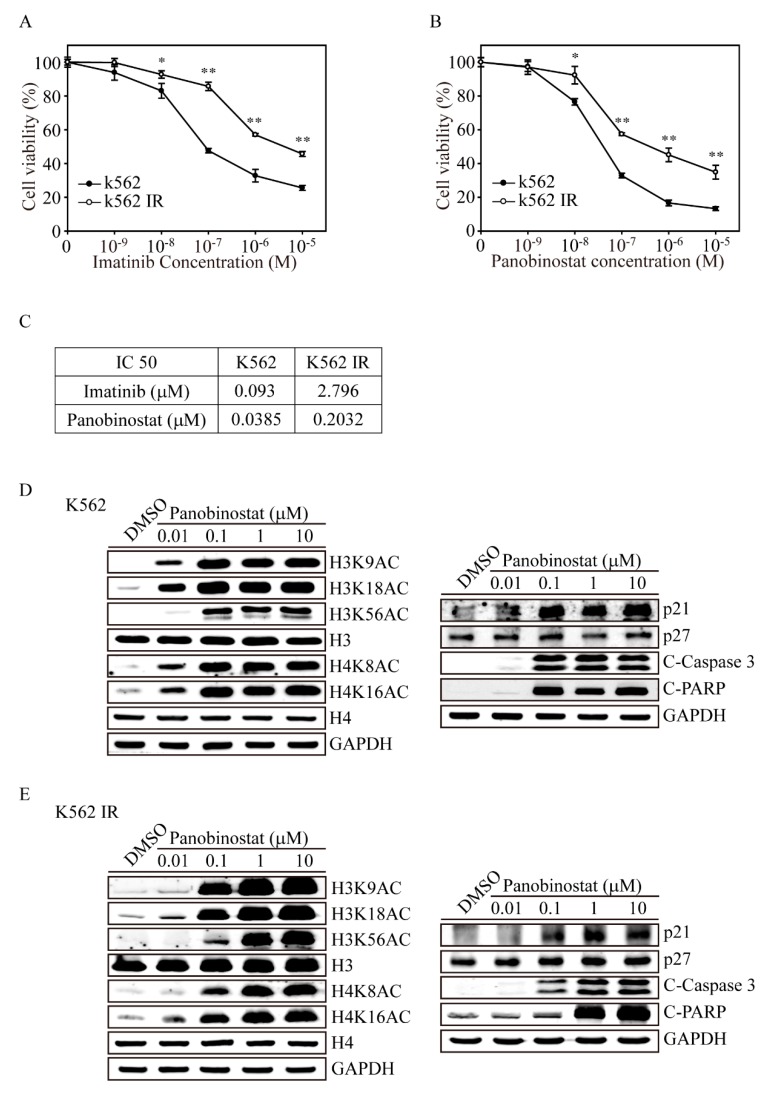Figure 4.
Panobinostat has anticancer effects on imatinib-resistant K562 cells. Both K562 and imatinib-resistant K562 (K562-IR) cells were seeded overnight and treated with 0.001, 0.01, 0.1, 1 and 10 μM of (A) imatinib or (B) panobinostat for 24 h. The cells were assessed for cell viability by MTT determination. Data are presented as the mean and standard deviation. Data were analyzed with Student’s t-test; all p-values were two-sided. p-values less than 0.05 are indicated with an asterisk, and values less than 0.01 are presented with two asterisks. (C) The IC50 values of imatinib and panobinostat treatments were calculated as the drug concentration that induced a 50% inhibition in cell viability. Immunoblot analyses of histone acetylation (H3K9AC, H3K18AC, H3K56AC, H4K8AC and H4K16AC), cell cycle arrest (p27 and p27) and apoptotic-related protein (C-Caspase 3 and C-PARP) expression following various panobinostat treatments for 6 h and 24 h on both (D) K562 and (E) K562-IR cells. H3, H4 and GAPDH immunoblots served as internal controls.

